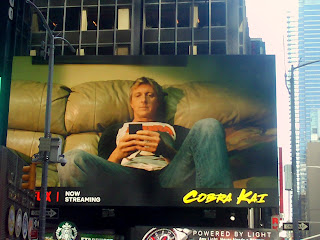I own the first season of The Mary Tyler Moore Show on DVD. For some reason, I find it especially reassuring. It takes me back to a time and place that were decidedly simpler and more innocent. I appreciate that for the Vietnam War-draft-aged men, 1970-71 was anything but simple and innocent. Still, I was an eight-year-old boy in the second grade at St. John’s neighborhood grammar school. My teacher—a kindly woman—lived up the street from me. I remember—at a class show-and-tell session—bringing in a toy clock that I had gotten for Christmas. It counted the minutes and hours away with indefatigable alacrity. I had this thing for clocks and calendars—a youthful time fetish.
And here I am now, thinking long and hard about the passage of it. Fifty years ago, I was lying on my grandmother’s living room rug with a big fluffy pillow covered with a flowery pillowcase. The latter was my grandmother’s handiwork, just as were the heavy wool socks—a wintertime staple—that she regularly crocheted for her grandchildren. In fact, one of the most captivating things about The Mary Tyler Moore Show was Mary’s cozy studio apartment and her large picture windows leading out to a deck. The fictional Mary Richards lived in the non-fictional Minneapolis, Minnesota with its notoriously cold and snowy winters. We television viewers were thus treated to ample fictional snowfall outside of Mary’s picture-perfect windows. As a boy, I considered snow an awesome weather phenomenon for a whole host of reasons, including outdoor hijinks, potential white Christmases, and—win-win—possible days off from school. What an awesome time it was to watch prime-time television. Everyone had a favorite show on any given night and there was indeed something for everyone. When The Mary Tyler Moore Show debuted, there were no reality shows with histrionic, insincere narcissists behaving badly or Love Islands with histrionic, insincere narcissists behaving equally badly. Once upon a time, the commercials served as welcome bathroom breaks or—in my grandmother’s presence—apple and grapefruit breaks. The commercial allotments were also reasonable in length, unlike today’s network TV promos, which are at once ubiquitous and intrusive. You could cook a full-course meal during some of these breaks.One final thought on that special time—1970-71: It represented the last year in existence of “The Garden,” as it was affectionately known, across the street from me. This sprawling “victory garden” was the last of its kind in my neighborhood, Kingsbridge in the Bronx. If I looked out my front window, or my grandmother’s below me, during the first season of The Mary Tyler Moore Show, I spied an elongated makeshift fence covering a sprawling patch of earth that sprang to life in the summertime and became starkly barren in wintertime. It was the end of an era in a city with fewer and fewer empty spaces and undeveloped lots for gardens and youthful adventures. The times they were a-changin’ then and then has gradually become now, which is quite a melancholy thought to entertain. Just gaze out your front window and contemplate where we were versus where we are. Love isn't quite all around us.
(Photos from the personal collection of Nicholas Nigro)





























